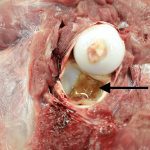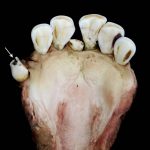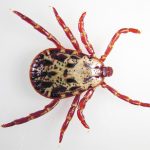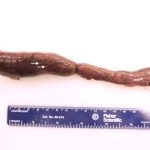The pathogen that causes tularemia can survive for months in the environment, including wetlands, and is spread through direct contact or inhalation from these sources.
Stories by Jamie Rothenburger, DVM

Adequate colostrum can prevent bloodstream infections
Antibodies contained in colostrum are critical for preventing infections before the young animal’s own immune system gains experience with microbes, matures and takes over.

Diet can play role in development of cavities in animals
A dental cavity can be seen on the incisor tooth of a wild muskoxen from the Canadian Arctic

Avian flu key topic at two recent veterinary conferences
While the spread of avian influenza in the U.S. dairy herd has been unprecedented and rapid, to date, there have been no cases in Canada.

Avian Influenza causing alarming impact on wild birds and mammals
The ongoing outbreak of avian influenza in North America has featured a number of unusual developments.

Producers should check regularly for signs of cancer eye
The disease known as cancer eye in cattle is an important economic and animal welfare issue.

Viruses significantly damage the brain of cattle fetuses
When pregnant cattle get infected with pathogens, there can be severe consequences for their fetal calves. Bovine viral diarrhea virus (BVD) is an important example of this.

Nervous system’s strong protection can cause problems
The nervous system is a truly remarkable biological achievement. However, the features that protect it can also contribute to harm in cases of disease.

Climate change will have negative effects on animal health
We can expect climate change to have effects on animal health in many different ways. Indeed, there is already evidence that the warming and altered climate affects disease dynamics in important ways. At its most basic level, climate change has increased global temperatures, and this will continue and accelerate, given our current trajectory. Heat stress […] Read more

Sustainability becomes critical factor in vet medicine
Without a doubt, environmental issues such as pollution, climate change and habitat loss impact animal health. Our collective future depends on finding new and better ways to tread lightly on our delicate planet. Environmental stewardship is a key pillar of the veterinary profession. The Canadian veterinary oath even includes the provision that “I will strive […] Read more




